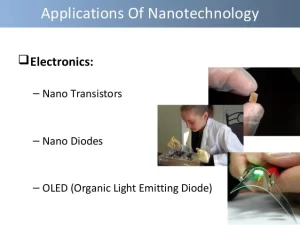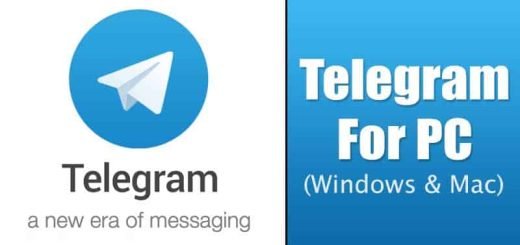Benefits and uses of Nanotechnology in Electronics
Nanotechnology is used in many communications, computing and electronic applications, It provides faster, smaller and more portable systems, These systems can manage and store larger and larger amounts of information.
Nanotechnology in Electronics
Nanoelectronics means using nanotechnology in electronic components. there are many applications such as computing and electronic products include Flash memory chips for iPod Nanos, antimicrobial and antibacterial coatings on the mouse, the keyboard, and the cell phone castings.
Nanoelectronics aims to process, transmit, and store information by taking advantage of properties of matter that are distinctly different from macroscopic properties.
Nanotechnology is used for printed electronics for RFID, smart cards, and smart packaging, It is used for more life-like video games and flexible displays for e-book readers.
Nanotechnology is used for nanoscale transistors that are faster, more powerful, and increasingly energy-efficient, You will see soon that your computer’s entire memory may be stored on a single tiny chip.
Nanotechnology is used in many new TVs, laptop computers, digital cameras, and cell phones, and it is used in many devices to incorporate nanostructured polymer films known as organic light-emitting diodes or OLEDs, where OLED screens offer brighter consumption and longer lifetimes.
Nanotechnology is used for magnetic random access memory (MRAM) enabled by nanometer‐scale magnetic tunnel junctions that can quickly and effectively save even encrypted data during a system shutdown or crash, So, It enables resume‐play features.
Nanotechnology in electronics provides faster, smaller and enhanced handheld devices, It provides advanced display technologies with conductive nanomaterials, data storage, quantum computing, printable and flexible electronics, and magnetic nanoparticles for data storage.
Nanotechnology can actually revolutionize a lot of electronic products, procedures, and applications such as electronic products include nano transistors, nano diodes, OLED, plasma displays and quantum computers.
Nanotechnology in electronics increases the capabilities of electronic devices while reducing their weight and power consumption, It increases the density of memory chips and it reduces the size of transistors that are used in integrated circuits.
Nanotechnology improves display screens on electronic devices, So the power consumption will be reduced, the weight and the thickness of the screens will decrease.
Application of nanoparticles in electronics
Nanoparticles have a significant impact on electronics, enabling advancements in miniaturization, performance, and energy efficiency.
- Transistors and Semiconductors: Nanoparticles, such as silicon and carbon-based nanomaterials (e.g., carbon nanotubes, graphene), help create smaller, faster, and more energy-efficient transistors. Quantum dots and nanowires are used to improve charge transport in semiconductors.
- Memory Storage Devices: Nanoparticles, including metallic and magnetic nanoparticles, are used in Flash memory and magnetic storage (e.g., hard drives) to increase data storage density. Resistive RAM (ReRAM) utilizes metal oxide nanoparticles for high-speed, non-volatile memory.
- Display Technologies: Quantum dots are used in QLED displays, improving color accuracy and brightness in TVs, monitors, and mobile screens. Nanoparticles enhance OLED (Organic LED) displays, making them thinner, flexible, and more energy-efficient.
- Nanoelectronics & Flexible Electronics: Silver, gold, and carbon nanotube-based nanoparticles help create wearable electronics and bendable circuits. Nanoparticles are used in printed electronics to produce ultra-thin, flexible circuits for smart textiles and medical sensors.
- Electromagnetic Shielding: Nanoparticles such as carbon nanotubes and graphene help develop EMI shielding materials for electronic devices, protecting them from electromagnetic interference.
- Batteries and Supercapacitors: Nanoparticles in lithium-ion batteries (e.g., silicon nanoparticles in anodes) increase battery life and charge efficiency. Graphene-based supercapacitors offer fast charging and longer durability compared to conventional capacitors.
- Nano-Sensors: Nanoparticle-based sensors are used in electronics for detecting gases, humidity, temperature, and biomolecules. They improve the sensitivity and response time of environmental and biomedical sensors.
- Photodetectors and Solar Cells: Nanoparticles improve the efficiency of photodetectors in cameras and security devices. Quantum dots and perovskite nanoparticles enhance solar cell efficiency by better capturing sunlight.
You can subscribe to Science Online on YouTube from this link: Science Online




